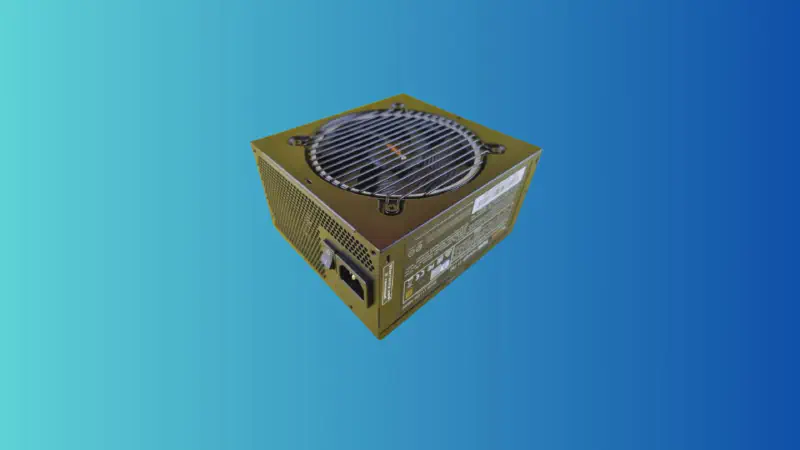# Introduction
Every computer device requires electricity to function. While mobile devices often rely on batteries, desktop PCs depend on a Power Supply Unit (PSU) to distribute electricity to all components connected to the motherboard. The electrical sockets in our homes typically supply Alternating Current (AC), but our computer devices need Direct Current (DC). Therefore, the PSU plays a crucial role in converting AC to DC, ensuring that each component receives the right voltage to operate efficiently.
# Understanding Electricity: A World of Atoms and Electrons
At the heart of electricity lies the atom. Atoms consist of a nucleus, made up of positively charged protons and neutral neutrons, surrounded by electrons, which are negatively charged and orbit in various layers around the nucleus. The outermost layer, or valence shell, determines an atom’s electrical properties. Atoms with loosely bound electrons in this shell are conductors, as they can easily pass electrons. Conversely, atoms that hold their electrons tightly are insulators.
# Electrical Distribution: From Generation to Our Homes
Electricity generation and distribution are akin to a well-coordinated system. Power companies generate electricity and distribute it through wires under pressure, which reaches our homes. This pressure of electrons moving through the wire is known as voltage, measured in volts (V). The flow of electrons, or current, is measured in amperes (A). Power, or the rate at which electricity is used, is measured in watts (W), calculated as the product of amperes and volts (W = A x V). Just like water flowing through pipes faces resistance, electrons moving through wires experience resistance, measured in ohms (Ω).
# Understanding Measurements:
- Voltage (V): The “pressure” driving electrons through a wire.
- Amperes (A): The “volume” of electrons flowing.
- Wattage (W): The “power” resulting from the flow of electrons.
- Ohms (Ω): The “resistance” against the flow of electrons.
This introduction sets the stage for understanding the critical role of power supplies in computer systems, providing the necessary groundwork for delving into the complexities of PSUs in the chapters that follow.
# Current
- Alternating Current (AC): In AC, the direction of the current reverses periodically, which is essential for efficient electricity distribution over long distances. The frequency of this reversal varies geographically, with the US and Canada typically using 110 to 120 VAC at 60 Hz, and Europe utilizing 220-240 VAC at 50 Hz.
- Direct Current (DC): DC is characterized by a unidirectional flow and a constant voltage, making it indispensable for the internal operations of computer devices.
# Computer Power Supply
Computers require DC voltage for their internal operations, whereas most external power sources provide AC voltage. PSUs are tasked with converting 120 V AC or 240 V AC into the lower voltages required by computer components: 3.3 V DC, 5 V DC, and 12 V DC. The proper functionality of a PSU is critical, as a malfunction can lead to system failure.
# Dual-voltage Input Options
Power supply units are equipped to handle the varying voltage standards found globally. In the US and Canada, the standard is 120 VAC at 60 Hz, whereas in Europe, it is 230 VAC at 50 Hz. PSUs can either be manually switched between these voltages or use an auto-switching mechanism. It is crucial to ensure the correct voltage setting to avoid damage to the computer.
# Power Supply Output
The PSU outputs different voltages to cater to various computer components. This includes both positive and negative voltages, where voltage is understood as a difference in electrical potential. For example, the +12 V rail is used for PCIe adapters and cooling fans, while +3.3 V is typically utilized by motherboard logic circuits. The PSU’s versatility extends to providing standby voltages, like +5 VSB, and supporting legacy voltages such as -12 V for integrated LAN and -5 V for ISA adapter cards.
# 24-pin Motherboard Power
The standard motherboard power connector has evolved from a 20-pin to a 24-pin format, primarily to support the increased power demands from modern components like PCI Express slots. This connector provides a range of voltages (+/-5 V, +/-12 V, and +3.3 V) and is often designed to be compatible with both 20-pin and 24-pin motherboards, offering versatility and ease of use in various build configurations.
# Redundant Power Supplies
In critical applications like servers, redundancy is key. Redundant power supplies, typically two or more, are integrated internally. Each is capable of handling the entire load but generally operates at half
